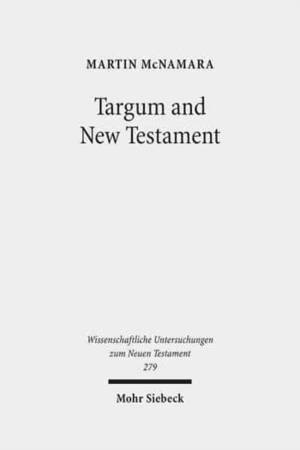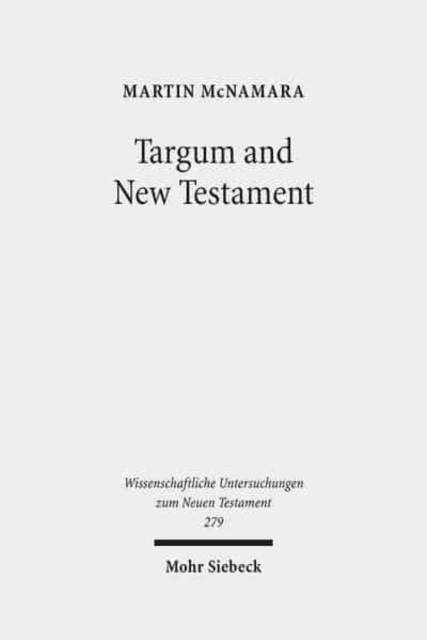
- Afhalen na 1 uur in een winkel met voorraad
- Gratis thuislevering in België vanaf € 30
- Ruim aanbod met 7 miljoen producten
- Afhalen na 1 uur in een winkel met voorraad
- Gratis thuislevering in België vanaf € 30
- Ruim aanbod met 7 miljoen producten
Zoeken
Omschrijving
The relevance of the Targums (Aramaic translations of the Hebrew Bible) for the understanding of the New Testament has been a matter of dispute over the past three hundred years, principally by reason of the late date of the Targum manuscripts and the nature of the Aramaic. The debate has become more focused by reason of the Qumran finds of pre-Christian Aramaic documents (1947) and the identification of a complete text of the Palestinian Targum of the Pentateuch in the Vatican Library (Codex Neofiti, 1956). Martin McNamara traces the history of the debate down to our own day and the annotated translation of all the Targums into English. He studies the language situation (Aramaic and Greek) in New Testament Palestine and the interpretation of the Scriptures in the Targums, with concepts and language similar to the New Testament. Against this background relationships between the Targums and the New Testament are examined. A way forward is suggested by regarding the tell-like structure of the Targums (with layers from different ages) and a continuum running through for certain texts.
Specificaties
Betrokkenen
- Auteur(s):
- Uitgeverij:
Inhoud
- Aantal bladzijden:
- 615
- Taal:
- Engels
- Reeks:
- Reeksnummer:
- nr. 279
Eigenschappen
- Productcode (EAN):
- 9783161508363
- Verschijningsdatum:
- 31/12/2011
- Uitvoering:
- Hardcover
- Formaat:
- Genaaid
- Afmetingen:
- 153 mm x 229 mm
- Gewicht:
- 1079 g

Alleen bij Standaard Boekhandel
+ 397 punten op je klantenkaart van Standaard Boekhandel
Beoordelingen
We publiceren alleen reviews die voldoen aan de voorwaarden voor reviews. Bekijk onze voorwaarden voor reviews.











